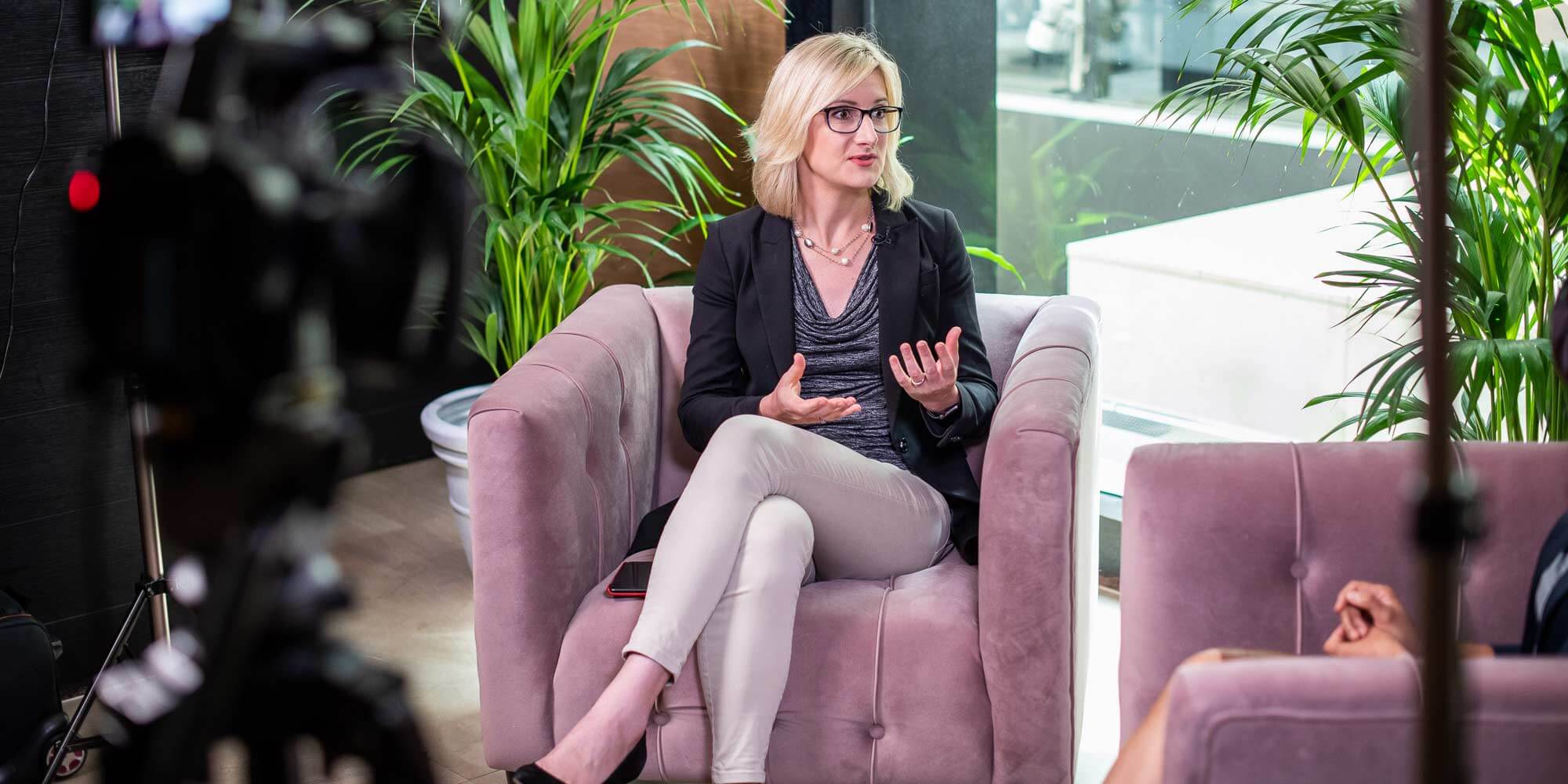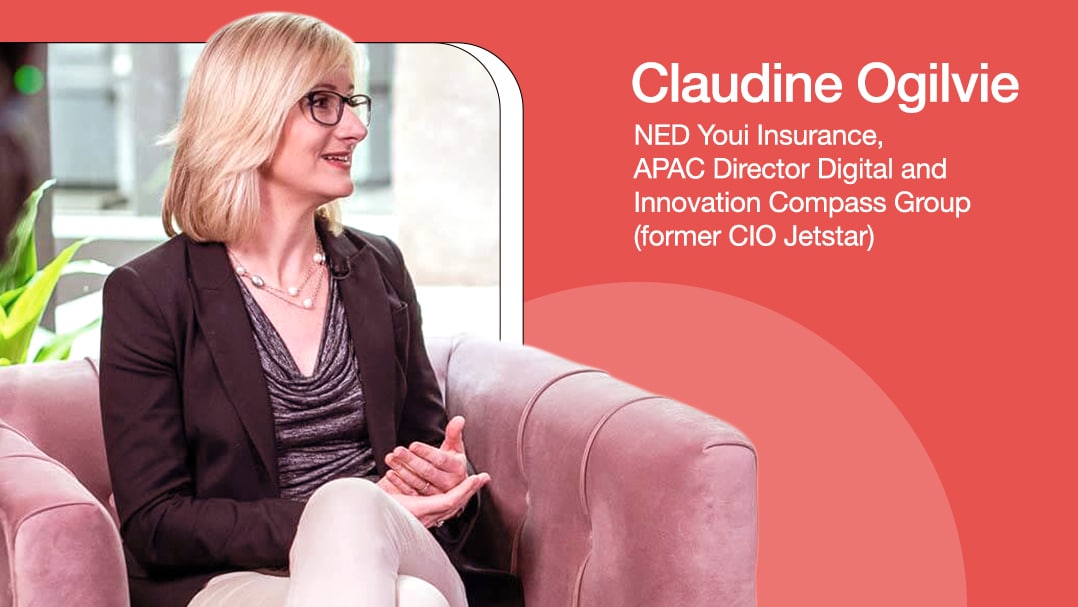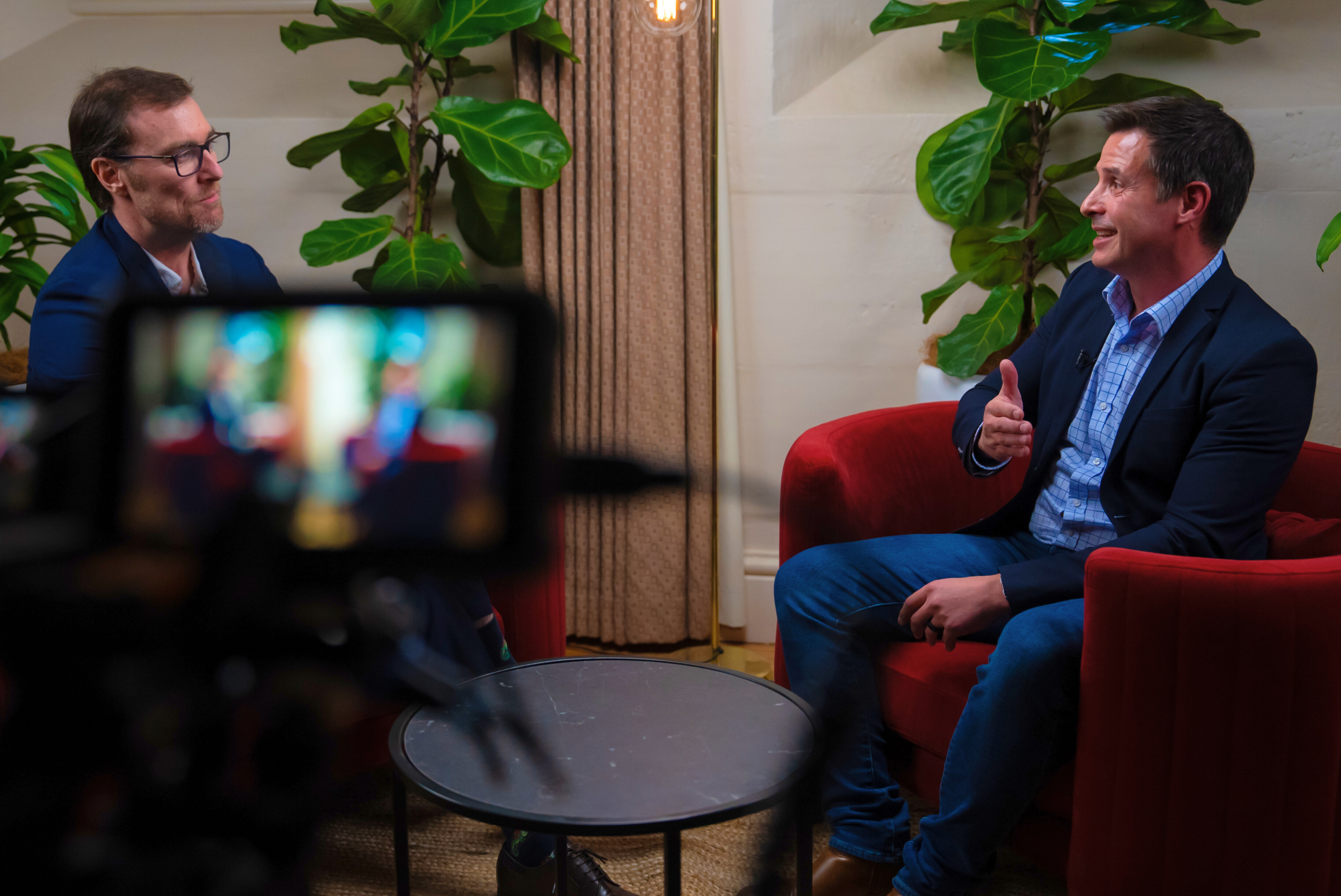Claudine Ogilvie was the Chief Information Officer for Jetstar and is currently Compass Group’s Director of Digital and Innovation. Prior to this, Claudine was CIO for Ridley Corporation; she managed KPMG’s Consumer and Industrial Markets business.
Speaking with ADAPT’s Senior Research Strategist Aparna Sundararajan at ADAPT’s CIO Edge, Claudine discusses improving internal and external customer experience, building your customer value proposition and measuring success via customer satisfaction metrics such as “on-time performance.”
Claudine also outlines the need to harness customer data and analytics, building brand trust through data security, and IT’s role in bridging the gap between technology and business outcomes.
Aparna Sundararajan:
Your role is, and your organisation is so much about customers, and one of the core competencies that we’ve identified at ADAPT for 2020 and beyond is enhancing customer experience.
I wanted to understand your perspective on what it means to you and your organisation today.
Claudine Ogilvie:
When enhancing customer experience, first, you need to look at who your customer is. You have your internal and your end customer, your external customer, and I think they build on each other.
If your end customers are unhappy, inevitably, I think you’ll get a lot of your own internal customers that’ll also be unhappy. Still, indirectly or directly, you’re particularly when it comes to front line staff.
If your internal customer is not quite happy, the frontline staff is one and empowering them through tech and tools and perhaps even the back end staff who feel like they’re not enabled perhaps to deliver their best, which ends up with the front customer. Then your customers will suffer too, so I think it’s important to get them both right.
Aparna Sundararajan:
That’s interesting because one of our data points is that, when we surveyed you all, we found that the collaboration between the customer service department and IT was pretty low compared to other departments.
I’m wondering if that comes from knowing if CIOs spend as much time thinking about the experience that the customer-facing department has on an everyday basis to make their jobs easier to deliver the experience further.
Claudine Ogilvie:
Well, that’s an excellent point.
When it comes to customer experience, you need to know your business, and that’s probably the first key point for me.
When I say know your business, I mean understanding how all the different departments in your business contribute to your end customer. I’ll give you a couple of examples at Jetstar.
You’ve mentioned the customer service department. So, we have several systems that help our customer service provide the best possible service by automating and augmenting the conversations they can have with the customers, providing them relevant information on who they are and what they might want.
We’ve also automated a process whereby we provide the lowest Airfare guaranteed.”
You may have heard of that one, and in the past, you’d have customers call in or send an email online and so say, look, I think I have a cheaper Airfare with a competitor. And then there would be a whole process of manual checks and then getting back to the customer and then proposing a new offer.
We’ve gone from taking that to several hours to several minutes to have a much better customer experience. It’s also reduced cost significantly to Jetstar, and that’s great for any organisation.
But especially for Jetstar, because it’s at the core of what we do, and if I were to weave purpose in there and something essential to understanding your company’s purpose, it really helps.
Understand where you want to put your investments and what makes sense from a customer experience perspective. At Jetstar we want more of our customers to travel more often and we can do that because we are able to have a low-cost base and offer low effort.”

Aparna Sundararajan:
That’s very interesting, and what happens when you have a particular situation which is more influenced by an external environment?
You have a sudden uproar of customers and the customer service needs to really handle them at the airports because I think recently there was news around Jetstar.
Claudine Ogilvie:
I think there are a number of factors that impact customer experience. Some of them are within your control and they are in your departments and it’s about how you bring together all the elements of your business, to create your customer value proposition, for their certain metrics that we know impact customer satisfaction more than others.
One is on-time performance or as we can say OTP, and that’s not just your customer-facing teams that will impact OTP.”
It’s also your engineering department and the engineering maintenance systems that turn things around, it’s the airport technologies that you have on the ground checking people in getting their bags, automated bag drops, the boarding technology. So all those things come together to impact OTP.
Those are things you can control and you can choose to invest in. Then there are things that we can’t always control. So, whether, and I can’t think of a better example in the last few months.
Aparna Sundararajan:
Yes, in fact, yesterday there were storms.
Claudine Ogilvie:
Storms, fire, smoke, hail that where it is out of our control and it comes down to how well we can then manage disruption.
There are our ground teams that of course do an amazing job at handling those situations. But there are things that we can do to help them in terms of providing the tech information that they need to do that as seamlessly as possible.
It takes me to another aspect of customer experiences is really understanding your customer and what matters to them in times of disruption as well as throughout their customer journey.
We really need to over-index on data analytics, insights, to really better understand the customer along that entire journey.”
So because you don’t have infinite capital to invest, what matters most to your customer and how does that relate best to your brand.
Aparna Sundararajan:
That is such a good point, such an important point that you made around data because that is what a lot of Australian organisations are struggling like, from our reports, about 80% of CIOs struggle to manage the data, and we found a reason to be the fact that there’s a disconnect between the business outcome that is required from that data.
It’s really interesting to understand from you that you’re using it to enhance customer experience which is also one of the top priorities for companies in Australia.
Moving into the various approaches for today and tomorrow since your customer expectations are probably changing every now and then, how are you approaching enhancing customer experience on an everyday basis or as a long term strategy?
Claudine Ogilvie:
We touched on knowing your business, and that’s really important and how will those different parts of the business contribute to that customer experience and how your purpose helps to shape how you invest in how you prioritise in that customer experience.
Another layer is data analytics, truly knowing your customer. In terms of our approach and how we go about customer experience.
The third layer we haven’t talked about yet is building trust and knowing that your data is secure as well.”
Confidence in your brand is absolutely critical. Looking at data and how you might approach that I like to see it in different layers again.
You have data access and security, then you have data commercially appropriate use of data and you’ve got ethical use of data as well. And all those things I think play into how you leverage that data to then contribute to your customer experience.
You have cybersecurity and ensuring that all that data and to secure end to end as well to create that confidence.
To answer your question in terms of our approach, know your business, know your customer, build confidence in your brand and in that experience.”
Aparna Sundararajan:
That is very holistic. And which other departments do you collaborate with to get to that?
Claudine Ogilvie:
Almost everything, end-to-end. I think different departments play different roles in the organisation, but also indirectly or directly in that customer experience.
You really have to play, build that customer experience hand in glove with them. It needs to be an integral part of the business, an integral part of the strategy and the outcomes.
It’s incumbent on us as technology leaders to bridge the technology with the business and the business outcomes. You have to do that in partnership and in collaboration.
 WATCH
09:57
WATCH
09:57




























